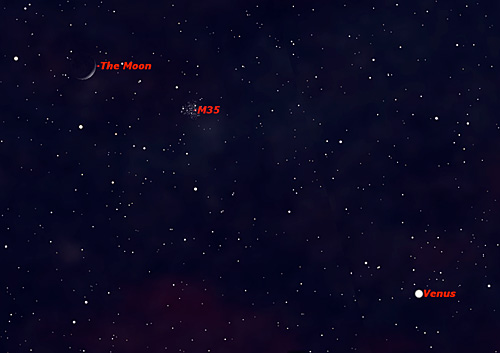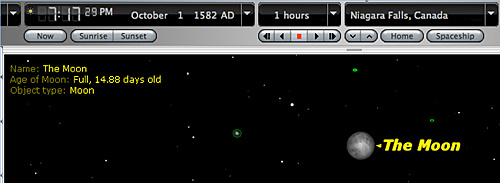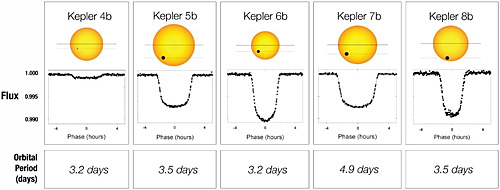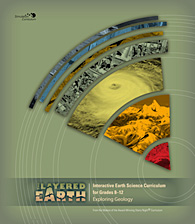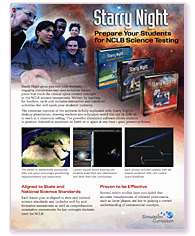 |
||||||||||||||||||||||||||||||||||||||||||||||||||||||||||||||||||||||||||||||||||||||||||||||||||||||||||||||
If you have trouble viewing this newsletter, click here. Welcome again to our monthly newsletter with features on exciting celestial events, product reviews, tips & tricks, and a monthly sky calendar. We hope you enjoy it!
Simply capture Starry Night in action, write a short description, tell us which version of Starry Night you're using and what you love about it. Send your screenshot to photo@starrynight.com. If we use any of your images in our Store, we'll send you your choice of one of our award-winning Astronomy DVDs or this beautiful Astronomy Poster Set. Images must be in JPG, GIF, or TIFF format (not zipped, please), 700px or smaller and 2MB or less.
Important note: In submitting your image or images to Simulation Curriculum®, you waive copyright and agree to allow us to publish them in all media—on the Web or otherwise—now and in the future.
Many amateur astronomers are actively involved in outreach, and often are called upon to conduct star parties for schools and the general public. Starry Night can be a very useful tool in organizing such events. Date With Starry Night you can quickly and easily check out possible dates and alternates. Because star parties are so dependent on the weather, it's good to have a “rain date” in mind. As discussed below, the Moon is usually the centerpiece of any star party, so keep that in mind when choosing a date. The best time to observe the rugged surface of the Moon is around First Quarter. This is because the terminator, the line between sunlight and shadow, is well placed around first quarter. It's also well placed at third quarter, but the Moon is then in the morning sky. You want to stay away from the days immediately before Full Moon, because the Moon will be flooding the sky with light, making any deep sky observing nearly impossible. The days between New Moon and First Quarter are particularly good, because the Moon sets fairly early. You might also consider a few days after Full Moon. The Moon will still be bright, but it won't rise until late in the evening, providing a good finale to the party. To read the rest of this article, click here.
The average time between full moons is about 29.5 days. This is known as the synodic period of the Moon or a lunation. It stands to reason then, that half a lunation -- the time from Full Moon to New Moon -- should be a bit less than 15 days. Well, consider the Full Moon of October 1, 1582.
To read the rest of this article, click here.
Now With 50% More Factoids The Kepler probe is in an Earth-trailing heliocentric orbit, meaning that it follows the Earth in its orbit around the Sun. This prevents the Earth from getting in the way of Kepler's target field, a patch of sky between Cygnus and Lyra. To date, Kepler has discovered five extrasolar planets, proving that it can do the job it was designed for, although so far none of these are Earthlike planets. They're all bigger than Earth. The smallest has a mass that is about 7% of Jupiter's. (Earth, by comparison, is less than half a percent of Jupiter's mass.)
Transit Light Curves [Source NASA] To read the rest of this article, click here.
Lunar Libration Open the “Lunar Libration Monthly” file and press the Run Time Forward button to illustrate the monthly libration of the Moon. Although the Moon is in a 1:1 spin-orbit lock with Earth, and rotates at a constant rate, its orbit is eccentric — and therefore the Moon revolves about the Earth at an inconstant angular rate. The resulting east-west "rocking" of the Moon is called longitudinal libration. The north-south "rocking" is caused by the fact that the Moon's orbit is tipped slightly more than 5 degrees to the ecliptic, so we are able to see varying views of the polar regions through the month. These librations thus allow us to see about 59% of the actual surface area of the Moon in a month. Pedro Braganca
At this time of year, Coma Berenices hangs high overhead, very well-placed for observation. Berenice was an Egyptian queen, the wife of King Ptolemy III Euergestes. When her husband went off to war, to ensure his safe return, she promised her hair to Aphrodite. The King did indeed return and Berenice gave up her hair, a tuft of which became this constellation. Diadem is a binary star about 47 lightyears from us. It's two suns cannot be split in telescopes but, just a little to the north, M53 hangs in space at a much greater distance: 60,000 lightyears. M53 is a halo cluster, filled with dozens of Mag 13 stars. M64, The Blackeye Galaxy, gets its famous name from the dark dust lane that cuts through the galaxy's core. With averted vision, you'll just be able to make out the lane. Overall, the galaxy is bright enough to be visible in binoculars. NGC 4725 is a large bright spiral galaxy which has been warped by its interactions with close-by NGC 4747. This patch of sky also contains the North Galactic Pole. NGC 4559, a faint spiral galaxy, is inclined 20° from edge-on. The larger your scope the better the view. NGC 4565 is inclined only 4° from edge-on and is breath-taking. Both galaxies belong to the Virgo Cluster. NGC 4494 is an elliptical galaxy whose core rotates very rapidly—and in the opposite direction to the stars in the outer disk! Sean O'Dwyer
|
MAY 2010
|
|||||||||||||||||||||||||||||||||||||||||||||||||||||||||||||||||||||||||||||||||||||||||||||||||||||||||||||
 |
||||||||||||||||||||||||||||||||||||||||||||||||||||||||||||||||||||||||||||||||||||||||||||||||||||||||||||||
|
||||||||||||||||||||||||||||||||||||||||||||||||||||||||||||||||||||||||||||||||||||||||||||||||||||||||||||||
You have received this e-mail as a user of Starry Night® or as a registrant at starrynighteducation.com
To unsubscribe, click here.
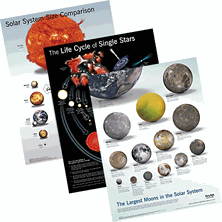 We've launched our new, streamlined
We've launched our new, streamlined 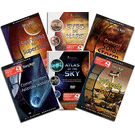 Don't have the latest version? Know someone who isn't running Starry Night yet? To celebrate our launch, we're also offering a 20% discount on any item in the store! Simply choose your software (upgrade OR new) and enter coupon code 'Clear Skies' in the shopping cart.
Don't have the latest version? Know someone who isn't running Starry Night yet? To celebrate our launch, we're also offering a 20% discount on any item in the store! Simply choose your software (upgrade OR new) and enter coupon code 'Clear Skies' in the shopping cart.